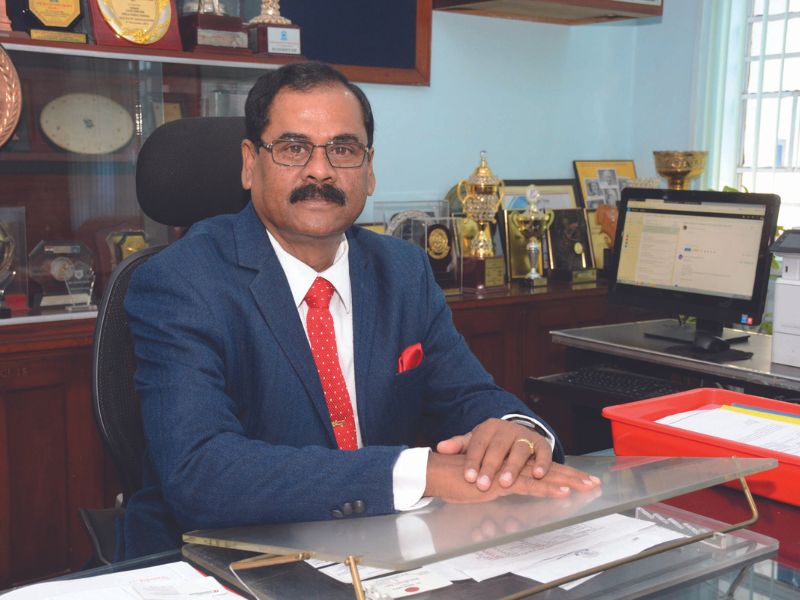Alokesh Sen

THE DESCRIPTIVE ‘LEARNING SPACE’ EVOKES the image of classrooms in which teachers and students are involved in face-to-face interaction. Undoubtedly, classrooms are the principal theatres of teaching-learning. However, in present times of internet connectivity and hybrid education, learning spaces need to be more broadly defined. In my school, students sitting by a pond or in our meditation centre are in a learning space. Therefore, it follows that a well-designed and landscaped school will provide numerous spaces conducive to knowledge transference and absorption to improve students’ learning outcomes.
Promoters of greenfield schools in particular, as also principals supervising renovation and expansion of schools, should bear in mind that designing campuses to create multiple learning spaces for pupils is a matter of great importance. Design and landscaping has to be simultaneously visionary and practical. Therefore, selecting architects/designers with in-depth knowledge of educational psychology, who take pains to understand the philosophy of specific educational institutions for whom they construct infrastructure and buildings, requires careful consideration. For instance, in the Birla Public School, Pilani, the junior school was designed by the legendary Dr. Maria Montessori herself. The design and layout of the building provides ample evidence that Dr. Montessori understood the sensory impact of diverse learning spaces and how they develop cognitive processes.
[userpro_private restrict_to_roles=
In recent years considerable research has been conducted involving spaces, senses and the brain. It’s now well established that children have diverse learning styles and processes. Therefore, learning spaces in schools must provide for diversity after budgeting for commonalities such as age, sex, socio-economic background of learners. Moreover, campus design must also conform with the vision, mission statement and educational philosophy of every school.
Creation of learning spaces in a school depends largely on what type of learning the institutional leadership values, and wants to encourage. For instance in recent years, pedagogies that encourage critical thinking, problem solving, collaboration, team building, integrated learning etc have assumed increasing importance. Therefore, school campuses and buildings have to be designed and/ or modified to enable new pedagogies.
More lately, there’s been a rediscovery of the advantages of peer-to-peer learning. In schools with high teacher-pupil ratios, cluster-learning with small groups of children led by brighter students and one-on-one in more fortunate institutions, have become popular. Therefore, buildings, classrooms and gardens should transform into enabling learning spaces. It’s important for school promoters, principals and leaders to appreciate that productive learning environments promote children’s independence, interdependence and self-motivation.
As stated earlier, campus architecture, design and landscaping are transforming into skilled sciences because institutional managements, principals and teachers need to move beyond and provide multiple learning spaces for children to acquire, absorb and often create knowledge. Moreover, traditional classrooms themselves have to reconfigure to accommodate new digital technologies, including wide screens, computer terminals and desktops which have revolutionised classroom instruction and learning.
With digitalisation and incremental usage of laptops and robots in classrooms, some educators have been tempted to predict teacher substitution with remote mentoring technologies. This is unlikely in the foreseeable future. However, while it is improbable that education technology will replace teachers, it’s certain that teachers who don’t embrace technology will be replaced by those who do.
In the circumstances, an important duty of school managements and principals is to ensure continuous training and development of teachers. Excellent online professional development programmes are available from Southampton and Leeds universities and the British Council, among other higher education institutions worldwide. Moreover, many of our teachers are members of international organisations such as Global Education Conference Network, Tony Blair Institute of Global Change which enable them to debate and exchange pedagogies to effectively mentor tech-savvy students preparing to become productive global citizens.
In sum, in progressive schools, learning spaces are not restricted to four walls of a classroom. It is important to encourage learning in diverse environments. In the pre-liberalisation socialist era, intellectual and academic opinion tended to be critical of well-designed campuses and capital expenditure on infrastructure.
Latter-day studies, however, have concluded that carefully designed, peaceful campuses with numerous learning spaces for formal and informal education, dramatically improve students’ learning outcomes.
Latter-day studies indicate that carefully designed, peaceful campuses with numerous learning spaces for formal and informal education, dramatically improve students’ learning outcomes.
Read Also: Placing K-12 education back on track
(Alokesh Sen is principal of the Birla Public School, Pilani)
[/userpro_private]










Add comment